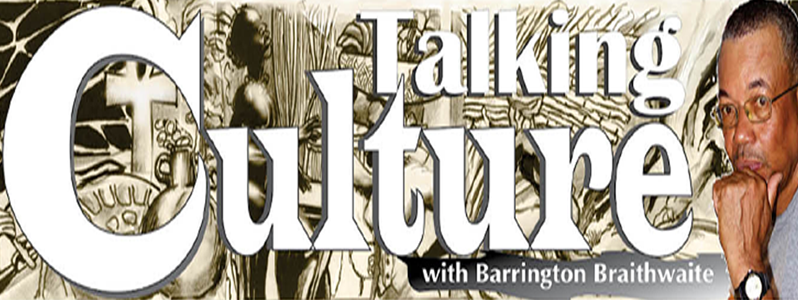OVER the years of economic challenge (1973-85) faced by this new nation, the intent of Mashramani, our Republic celebrations, was circumvented. While employed years later by the Department of Culture, I learned the following: that Mash was intended to be a constant creative vehicle that showcased the history, flora and fauna, while fulfilling the mass harvest celebration festivity of its natural cultural origins, paying symbolic homage to the matriarchal ethos fulfilled through the blessings of the land through acquired works done, and challenges triumphed over. It is where the top acclaimed cultural minds, who then managed this festival, and the Department of Culture, had conceptualised its unfolding when it began. The steel band was a pivotal aspect of this national celebration. We tramped back then, behind our favourite steel bands, playing the music of local and Caribbean popular rhythms. The tramp embodied the ‘Mash’ around-the-town celebration. Yes, it was taken advantage of as orders would be made at shops that sold liquor and beverages, and upon the issue of items, and characters would run away with the items without paying. This led to restrictions on the steel band ‘Tramp.’ The bands, likewise, were complaining that they were not issued the police chaperons requested. All in all, the tramp was fun. Steelpan was ‘king’ and the tramp cemented ‘MASH’ as a central movement of the Masramani celebrations and truly popularised it in those early years. The creative intent was to convey a pageantry of ‘Being Guyanese’ through complete dramatic sections (episodes) of 1763. To begin with, on flag-raising night, I’m certain that citizens who visited flag- raising night back then could recall the costumed drama that was a prominent feature. Costumes were required to have local themes, challenging the imagination and creative skills of local designers, and on many occasions, they came through. The costumed bands entered the park to be judged, and the steel bands left to take the streets, each to its prescribed route, with its mass following-‘party time.’
 But where did Mashramani emerge from? The Carnival Festival that Mashramani represents has in name a local contribution. It’s Amerindian. It encompasses the triumph of work done, be it the cooperative building of a house or the preparation at that special time of the year of the selected farmlands. When the task is complete, the workers celebrate with dancing, feasting and the drinking of piwari. Much of this is prepared, and all must be consumed. The original word is ’MASHRIMEHI’, it was our own Basil Butcher who coined the word ‘Mashrimani,’ and it was later adopted by the Jaycees of Guyana; it began as a Linden thing. But its costumes, and storytelling addition to the festivities, we must travel some 5000 years along the human ‘Timeline’ to the death of one of the mythologies [ancient religion] most celebrated of the Saviour’s of mankind, the Kemetic (Egyptian) God ‘Ausar’ or Osiris. Ausar was killed by his brother god Set, after Set’s wife, the Goddess Nephthys, tricked Osiris into sleeping with her. Thus Set conspired and slayed Ausar. His powerful wife ISIS however was able to resurrect Ausar-Osiris-, this resurrection was celebrated by the people of Khemet, in the context of a costumed drama of the event accompanied by dancing, Beer and the festivities to honour the rebirth of the potency of the land, its resurrection, and of the higher level of the being, this is a common cultural understanding and practice across Africans. With time, this celebration was taken into Europe from Africa through the Greek God Dionysos or Bacchus, and here we leave the Ancient Mysteries, to return to the current times, and hope independent research by skeptics can empower a more vivid understanding of the Carnival spirit of the Caribbean, Brazil and other nations, and our own Mashramani. Most festivities revolve around celebrating the harvest reaping and the end of the dry season. The latter is celebrated as a courting season among some tribes in Africa, as it symbolises fertility. What is now called Carnival began with a nature, Kosmic script, from a matriarchal backdrop, thus in the New World, sensuality in dance where tribal dictates have faded, the senses retain the concept of the rites of nature in play and display without incident.
But where did Mashramani emerge from? The Carnival Festival that Mashramani represents has in name a local contribution. It’s Amerindian. It encompasses the triumph of work done, be it the cooperative building of a house or the preparation at that special time of the year of the selected farmlands. When the task is complete, the workers celebrate with dancing, feasting and the drinking of piwari. Much of this is prepared, and all must be consumed. The original word is ’MASHRIMEHI’, it was our own Basil Butcher who coined the word ‘Mashrimani,’ and it was later adopted by the Jaycees of Guyana; it began as a Linden thing. But its costumes, and storytelling addition to the festivities, we must travel some 5000 years along the human ‘Timeline’ to the death of one of the mythologies [ancient religion] most celebrated of the Saviour’s of mankind, the Kemetic (Egyptian) God ‘Ausar’ or Osiris. Ausar was killed by his brother god Set, after Set’s wife, the Goddess Nephthys, tricked Osiris into sleeping with her. Thus Set conspired and slayed Ausar. His powerful wife ISIS however was able to resurrect Ausar-Osiris-, this resurrection was celebrated by the people of Khemet, in the context of a costumed drama of the event accompanied by dancing, Beer and the festivities to honour the rebirth of the potency of the land, its resurrection, and of the higher level of the being, this is a common cultural understanding and practice across Africans. With time, this celebration was taken into Europe from Africa through the Greek God Dionysos or Bacchus, and here we leave the Ancient Mysteries, to return to the current times, and hope independent research by skeptics can empower a more vivid understanding of the Carnival spirit of the Caribbean, Brazil and other nations, and our own Mashramani. Most festivities revolve around celebrating the harvest reaping and the end of the dry season. The latter is celebrated as a courting season among some tribes in Africa, as it symbolises fertility. What is now called Carnival began with a nature, Kosmic script, from a matriarchal backdrop, thus in the New World, sensuality in dance where tribal dictates have faded, the senses retain the concept of the rites of nature in play and display without incident.
In closing, no peoples have failed to express in art, sculpture or have evicted the language of the continuity of the species from any form of their vocabulary. Thus, I must remind those who perceive Mash as too sensual, from its inception, I’ve watched drunks overdo it at times to their own injury, but I have never heard of a personal violation, because of cultural acceptance, nothing is perceived as a display of an aggressive inviting mood, displays of sensuality happen within familiar groups, some times of co-workers. Mashramani has always as indicated, had its own agenda, but it cannot escape the nature of its festive origins, within the modern European term of carnival. It was great to read about the ambitions of a new generation of costume ‘Designers’ Chronicle 20, Feb. 2022. It will require research, original interpretations etc. but welcome to the Kulture.



.jpg)








